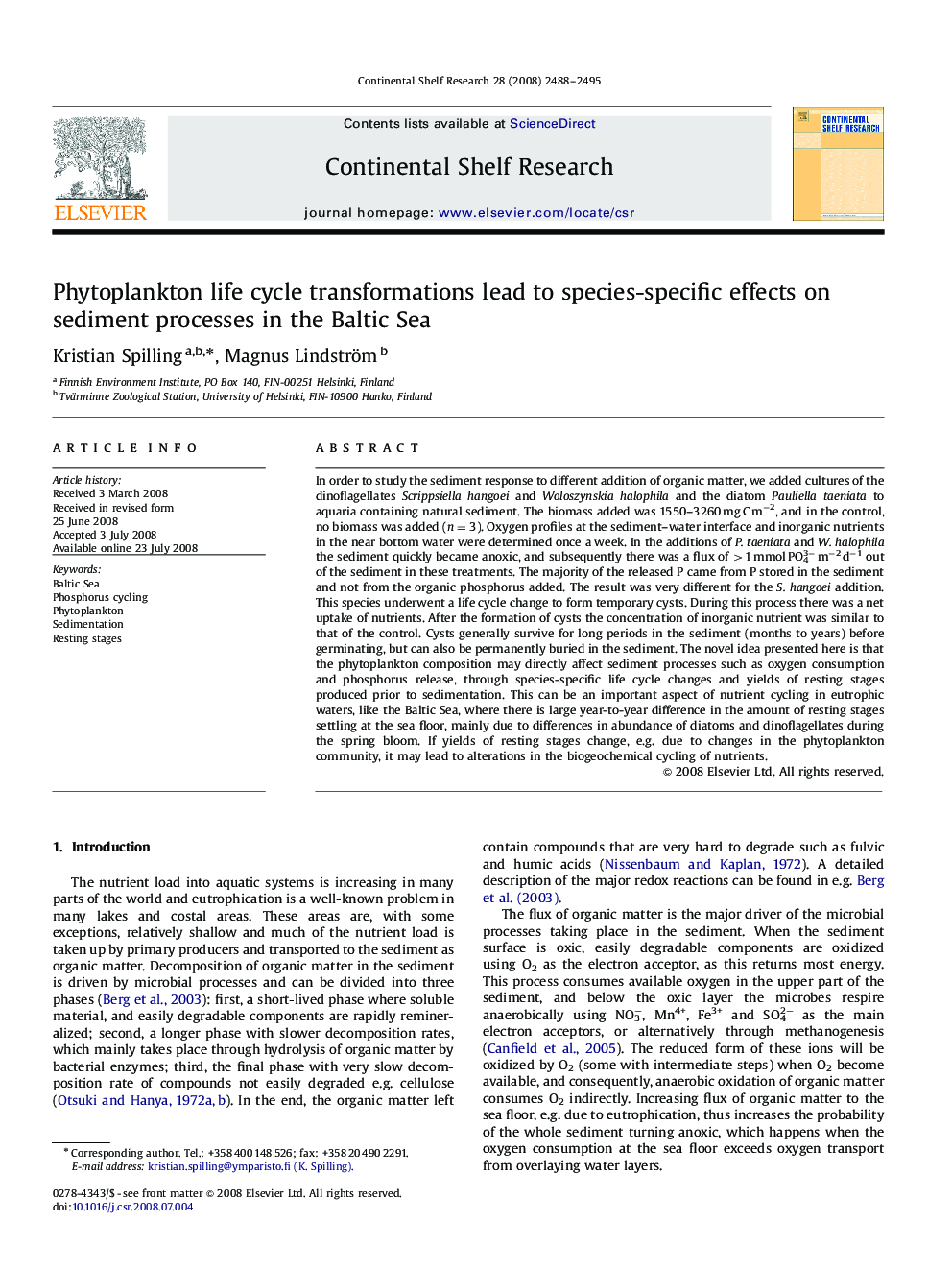| Article ID | Journal | Published Year | Pages | File Type |
|---|---|---|---|---|
| 4533486 | Continental Shelf Research | 2008 | 8 Pages |
Abstract
In order to study the sediment response to different addition of organic matter, we added cultures of the dinoflagellates Scrippsiella hangoei and Woloszynskia halophila and the diatom Pauliella taeniata to aquaria containing natural sediment. The biomass added was 1550-3260 mg C mâ2, and in the control, no biomass was added (n=3). Oxygen profiles at the sediment-water interface and inorganic nutrients in the near bottom water were determined once a week. In the additions of P. taeniata and W. halophila the sediment quickly became anoxic, and subsequently there was a flux of >1 mmol PO43â mâ2 dâ1 out of the sediment in these treatments. The majority of the released P came from P stored in the sediment and not from the organic phosphorus added. The result was very different for the S. hangoei addition. This species underwent a life cycle change to form temporary cysts. During this process there was a net uptake of nutrients. After the formation of cysts the concentration of inorganic nutrient was similar to that of the control. Cysts generally survive for long periods in the sediment (months to years) before germinating, but can also be permanently buried in the sediment. The novel idea presented here is that the phytoplankton composition may directly affect sediment processes such as oxygen consumption and phosphorus release, through species-specific life cycle changes and yields of resting stages produced prior to sedimentation. This can be an important aspect of nutrient cycling in eutrophic waters, like the Baltic Sea, where there is large year-to-year difference in the amount of resting stages settling at the sea floor, mainly due to differences in abundance of diatoms and dinoflagellates during the spring bloom. If yields of resting stages change, e.g. due to changes in the phytoplankton community, it may lead to alterations in the biogeochemical cycling of nutrients.
Related Topics
Physical Sciences and Engineering
Earth and Planetary Sciences
Geology
Authors
Kristian Spilling, Magnus Lindström,
